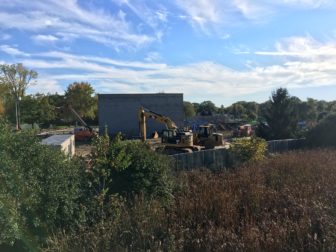
Chloe Peter
The proposed sinking fund millage is lower than in years past in part due to the construction of the new elementary schools, such as Glencairn Elementary, which are expected to have lower maintenance and utility costs.
Below the list of candidates running for office, East Lansing voters will see two millage proposals on the November ballot. If passed, these millages will update millages in the school district.
The operating millage and sinking fund millage are updates have been in place since 2008. If passed, they will stay in effect until 2028 and generate $10.8 million a year for the district.
The operating millage proposal would not change taxes for home owners. Richard Pugh, the district’s director of finance, said, “Principal residences are exempt from this millage. This means a home owner is not subject to the operating millage on their principal residence.”
Commercial, industrial, and rental property, however, would be subject to the operating millage, which proposes a tax of 18 mills, or $18 for every thousand dollars of taxable property. This increases the current operating millage rate of $17.9795 per every thousand dollars of property.
Although property owners cannot now be taxed above 18 mills for an operating millage, they may notice the ballot language asks for 22 mills, or $22 per thousand. Pugh says this is in case of inflation. “When property taxable values increase faster than the rate of inflation, the authorized millage must be reduced or rolled back,” he explained. “However, the formula used by the state to calculate the district’s state aid assumes the district levies 18 mills for its operating levy. If the district levies less than 18 mills it will not receive its full foundation allowance because the state does not make up the difference.” Even if tax rates are reduced due to changes in property value and inflation, voters will already have approved four additional mills to make up the difference and keep funding consistent.
While the operating millage will tax non-residential properties if passed, the second proposal, the sinking fund millage, effects East Lansing homeowners, levying a 1 mill tax on all residential property in the city.
The average home value in East Lansing is $189,800 and in Michigan, property taxes are only levied on half of a property’s total value, or assessed value. This means that for the average home, each mill of taxes costs $94.90 a year.
This is a reduction from the existing sinking fund millage, which taxes $1.277 for every $1,000 of residential property. As school infrastructure is being updated (including the rebuilding of the district’s elementary schools), heating, cooling, and maintenance are becoming more efficient and fewer funds are required.
If the sinking fund millage passes, property taxes will go down slightly. If it does not pass, the sinking fund millage will be removed altogether.
Karin Polischuk, the mother of two and president of the Glencairn Elementary PTO, said “I’m not generally in favor of taxes, but for the schools I am. I’m a product of public education. I’m grateful that my children go to the great schools that we have.”
The proposed millages are designed to replace similar ones that went into effect in 2008. In that election, the Operating Millage passed with 76 percent of the vote and the Sinking Fund Millage received 70 percent.
Though Polischuk consistently supports school millages, she said the timing of the proposals may deter other voters. “I know it seems to a lot of voters that we’re constantly being asked for more taxes, but a lot of people don’t understand that the school district runs separately from the city,” she said. “Like last year, we luckily passed our school bond so that we’re able to rebuild all five of our elementary schools, which really needed to be done. And then a few months ago, the city passed the income tax, but that’s completely different from the school. And these two millages we will be voting on in November, they happen to be up. They have to be renewed every 10 years, and it happens to be timed out that they’re up after a couple of other taxes have already been passed.”
Polischuk says she is in the schools often enough to conclude the district is spending tax money wisely but believes there is still a need for funding. If passed, Polischuk hopes the funds go towards the hiring of additional teachers, para-pros, and social workers.
While sinking fund millages go entirely to building repairs and improvements such as roofs, parking lots and technology, Pugh says the operating millage pays for salaries, classroom supplies, transportation, electricity and more.
The district has information about the millage proposals on its website.